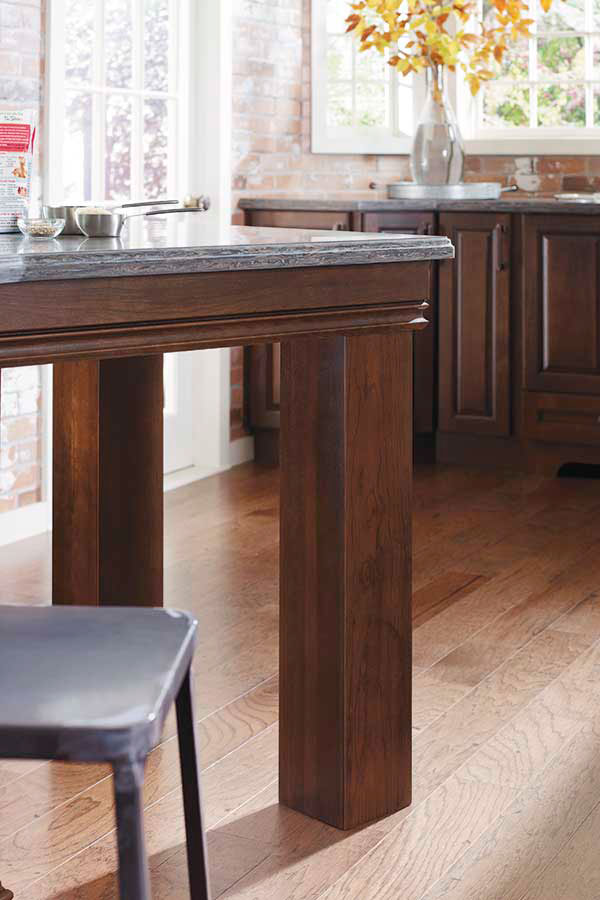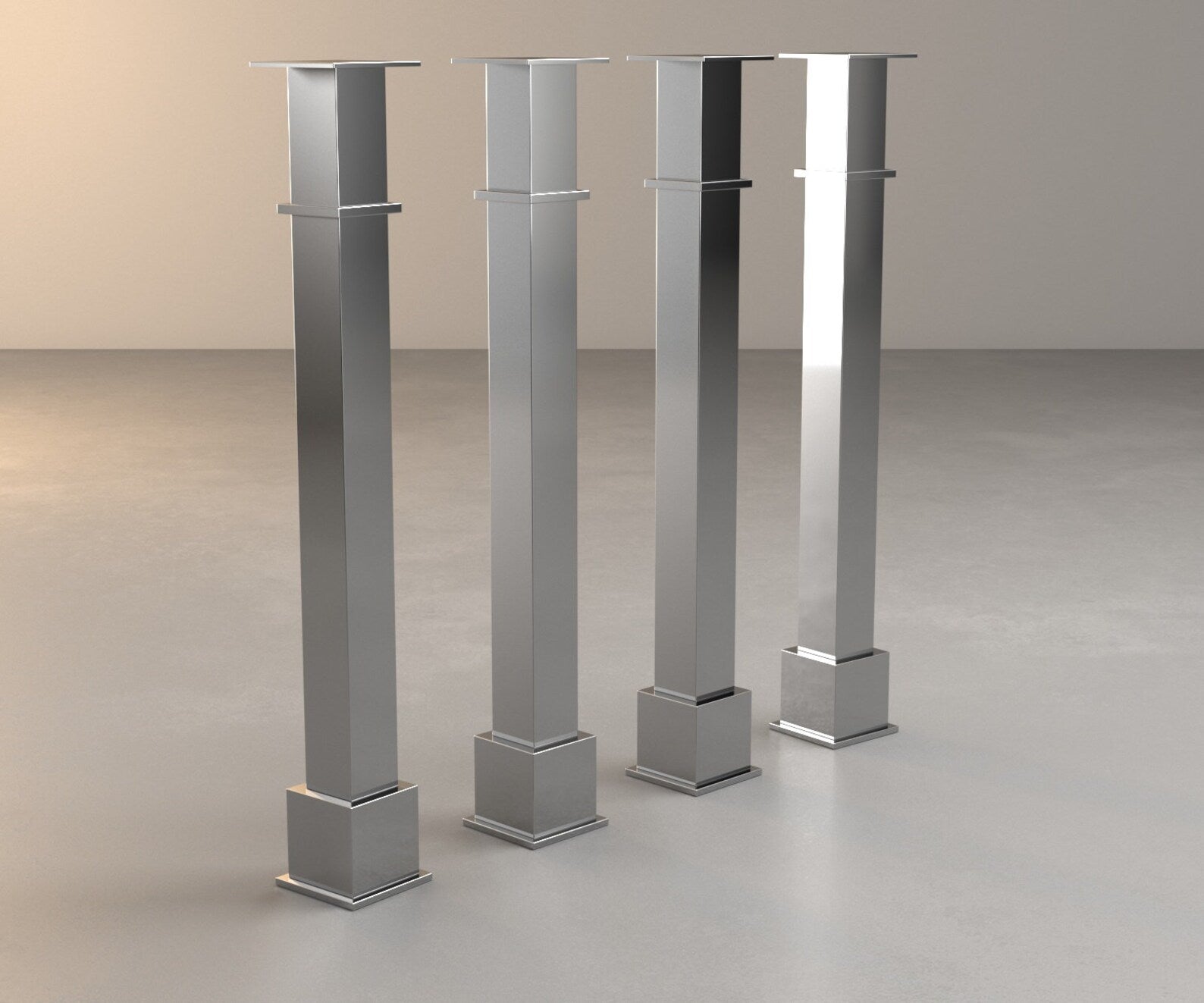Explore Modern and Classic Layouts in Legs For Kitchen Island Jobs
Explore Modern and Classic Layouts in Legs For Kitchen Island Jobs
Blog Article
Essential Elements to Think About When Choosing Legs For Kitchen Area Island
Selecting the proper legs for a kitchen island entails a mindful evaluation of multiple elements that can substantially influence both functionality and aesthetic appeal. As we explore these elements, it comes to be clear that each decision can have far-ranging ramifications for the general cooking area experience.
Material Options
When selecting legs for a kitchen area island, recognizing the different product choices is crucial for achieving both visual allure and architectural stability (Legs For Kitchen Island). The selection of product substantially affects not just the longevity of the island however additionally its general design and functionality
Steel legs, often made from stainless steel or functioned iron, contribute a modern and commercial feel while guaranteeing durability and stability. These materials are resistant to use and can support significant weight, making them optimal for larger islands.
Another option is crafted materials, like MDF or plywood, which can be extra affordable while still offering a series of finishes. They may not supply the same level of stability as strong timber or metal. Legs For Kitchen Island. Materials such as acrylic or glass can create a contemporary look, though they may need extra assistance to make sure stability.
Inevitably, the selection of material for kitchen island legs should align with the wanted capability and the total style of the kitchen area.
Style and Layout

When taking into consideration design, the form and coating of the legs are vital. Tapered legs can give a feeling of agility and style, while thicker, more robust legs can convey strength and security. In addition, the coating-- be it repainted, discolored, or natural-- must complement the cabinetry and kitchen counter products to develop a unified appearance.
Moreover, the style of the legs can additionally show individual taste. Custom-made or ornamental legs, such as those including detailed makings or unique geometric shapes, can serve as focal factors, adding character and personality to the cooking area. Ultimately, the appropriate option will not only boost performance but additionally boost the aesthetic allure, making the kitchen area island a standout attribute of the home.
Height Considerations
Choosing the appropriate elevation for kitchen island legs is essential, as it straight influences both capability and convenience. The basic height for a kitchen island commonly ranges from 36 to 42 inches, aligning with usual kitchen counter elevations.

It is likewise vital to account for individuals' heights and preferences. Personalizing the elevation can guarantee a comfy experience for all family members, making the cooking area island an extra satisfying and practical space.
Weight Assistance
Making certain appropriate weight support for cooking area island legs is essential for both safety and security and capability. The cooking area island typically serves multiple purposes, including cooking, eating, and extra storage space, requiring a robust assistance structure. When selecting legs, it is critical to take into consideration the general weight capability called for based upon the island's intended usage and the materials that will certainly be put on it.
The selection of product for the legs plays a considerable function in their weight-bearing abilities. Solid timber, steel, and durable compounds normally give premium stamina contrasted to lighter materials. In addition, the style of the legs-- whether they are right, tapered, or have a pedestal kind-- can affect their capacity to distribute weight effectively across the structure.
Always consult the producer's specs concerning tons limits to guarantee that the legs can sustain the designated weight without jeopardizing safety and security. In summary, picking kitchen area island legs with sufficient weight support is important for creating a useful and risk-free cooking room.
Installation and Maintenance
Proper setup and maintenance of cooking area island legs are critical for making certain durability and security. To start, it is necessary to follow the producer's guidelines throughout installation. This usually entails safeguarding the legs to the space station making use of ideal bolts, guaranteeing that the legs are degree and straightened. Using a level tool can assist stop tottering and boost the total aesthetic allure of the kitchen area island.
When mounted, routine maintenance is essential to protect the integrity and look of the legs - Legs For Kitchen Island. For wood legs, periodic cleansing with a damp towel and application of ideal wood polish look at here can avoid dampness damage and keep their surface. Steel legs may need a mild cleaning remedy to remove grease and grime, adhered to by a completely dry cloth to stop rust formation
In addition, examine the legs on a regular basis for signs of wear or damage, such as splits or loose joints. Tightening up screws or screws as needed can likewise lengthen the life-span of the legs. By sticking to these installation and maintenance practices, home owners can guarantee that their cooking area island remains durable and visually appealing for several years to find.
Conclusion

Visual comprehensibility is paramount in selecting the style and style of legs for a cooking area island, as these components significantly influence the overall ambiance of the space. Tapered legs can Legs For Kitchen Island provide a sense of agility and elegance, while thicker, more durable legs can share toughness and security.Selecting the proper height for kitchen island legs is important, as it directly impacts both capability and comfort. In summary, selecting kitchen island legs with ample weight assistance is vital for creating a functional and secure cooking area.
In conclusion, picking legs for a kitchen area island necessitates mindful consideration of various aspects, including product options, design, height, weight assistance, and installation.
Report this page